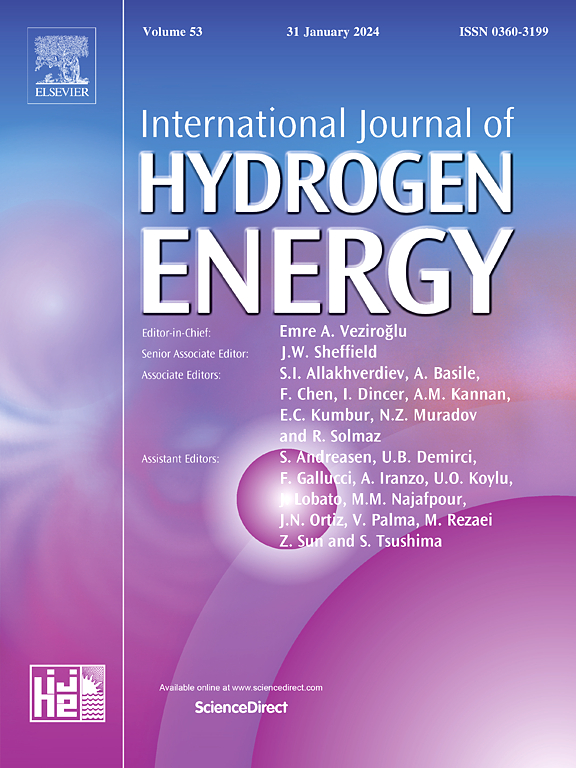Solar-driven conversions of plastic waste to valuable chemicals with green hydrogen production
IF 8.1
2区 工程技术
Q1 CHEMISTRY, PHYSICAL
引用次数: 0
Abstract
The conversion of plastic waste into renewable fuels through photocatalytic processes represents a promising pathway toward addressing both environmental pollution and energy demands. This review presents a detailed examination of solar-driven plastic photoreforming, a strategy that leverages water and sunlight to generate H2 and other value-added compounds from discarded polymers. We begin by outlining the fundamental mechanisms of this technology, emphasizing how charge carriers and reactive species mediate concurrent plastic oxidation and H2 evolution or CO2 reduction. Key mechanistic insights are discussed, particularly those related to oxidative degradation pathways and the roles of reactive oxygen species. Then, recent advances in photocatalyst development and system integration using various semiconductors, with attention to catalyst design parameters, system configuration, and coupling with secondary processes. While this approach offers significant potential, practical deployment remains constrained by challenges such as low catalytic efficiency, carbon management inefficiencies, pretreatment needs, and scale-up limitations. To address these, we provide a roadmap for future development, including recommendations for material innovation, mechanistic exploration, and system-level optimization. This review aims to serve as a comprehensive guide for researchers seeking to advance the field of solar-assisted plastic valorization and contribute to the establishment of a circular, carbon-neutral economy.
太阳能驱动的塑料废物转化为有价值的化学品,绿色氢生产
通过光催化过程将塑料废物转化为可再生燃料是解决环境污染和能源需求的一条有希望的途径。这篇综述介绍了太阳能驱动塑料光重整的详细研究,这是一种利用水和阳光从废弃聚合物中产生H2和其他增值化合物的策略。我们首先概述了该技术的基本机制,强调电荷载流子和活性物质如何介导同步塑性氧化和H2演化或CO2还原。讨论了关键的机制见解,特别是那些与氧化降解途径和活性氧的作用有关的见解。然后,介绍了使用各种半导体的光催化剂开发和系统集成的最新进展,重点介绍了催化剂的设计参数、系统配置以及与二次工艺的耦合。虽然这种方法具有巨大的潜力,但实际应用仍然受到诸如催化效率低、碳管理效率低、预处理需求和规模限制等挑战的制约。为了解决这些问题,我们为未来的发展提供了路线图,包括材料创新,机制探索和系统级优化的建议。本综述旨在为寻求推进太阳能辅助塑料增值领域的研究人员提供全面指导,并为建立循环碳中和经济做出贡献。
本文章由计算机程序翻译,如有差异,请以英文原文为准。
求助全文
约1分钟内获得全文
求助全文
来源期刊

International Journal of Hydrogen Energy
工程技术-环境科学
CiteScore
13.50
自引率
25.00%
发文量
3502
审稿时长
60 days
期刊介绍:
The objective of the International Journal of Hydrogen Energy is to facilitate the exchange of new ideas, technological advancements, and research findings in the field of Hydrogen Energy among scientists and engineers worldwide. This journal showcases original research, both analytical and experimental, covering various aspects of Hydrogen Energy. These include production, storage, transmission, utilization, enabling technologies, environmental impact, economic considerations, and global perspectives on hydrogen and its carriers such as NH3, CH4, alcohols, etc.
The utilization aspect encompasses various methods such as thermochemical (combustion), photochemical, electrochemical (fuel cells), and nuclear conversion of hydrogen, hydrogen isotopes, and hydrogen carriers into thermal, mechanical, and electrical energies. The applications of these energies can be found in transportation (including aerospace), industrial, commercial, and residential sectors.
 求助内容:
求助内容: 应助结果提醒方式:
应助结果提醒方式:


